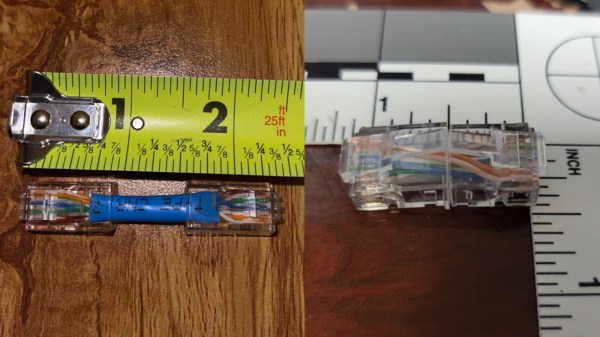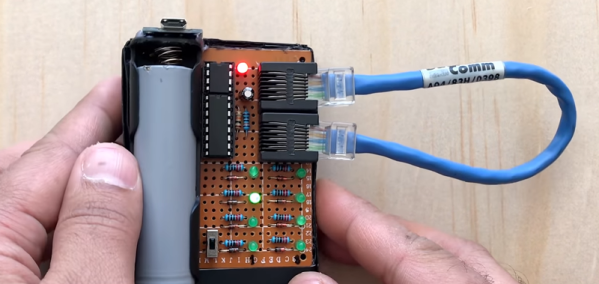If you’ve had any dealings with Cat 5 and Cat 6 cable, and let’s be honest, who hasn’t, you’ve probably wrestled with lengths anywhere from 1 meter to 25 meters if you’re hooking up a long haul. Network admins will be familiar with the 0.1 m variety for neat hookups in server cabinets. However, a Reddit community has recently taken things further.
It all started on r/ubiquiti, where user [aayo-gorkhali] posted a custom-built cable just over 2 inches long. The intention was to allow a Ubiquiti U6-IW access point to be placed on a wall. The tiny cable was used to hook up to the keystone jack that formerly lived in that position, as an alternative to re-terminating the wall jack into a regular RJ45 connector.
Naturally this led to an arms race, with [darkw1sh] posting a shorter example with two RJ-45 connectors mounted back to back with the bare minimum of cable crimped into the housings. [Josh_Your_IT_Guy] went out the belt sander to one-up that effort, measuring just over an inch in length.
[rickyh7] took things further, posting a “cable” just a half-inch long (~13 mm). In reality, it consists of just the pinned section of two RJ-45 connectors mounted back to back, wired together in the normal way. While electrically it should work, and it passes a cable tester check, it would be virtually impossible to actually plug it into two devices at once due to its tiny length.
We want to see this go to the logical end point, though. This would naturally involve hacking away the plastic casings off a pair of laptops and soldering their motherboards together at the traces leading to the Ethernet jack. Then your “cable” is merely the width of the solder joint itself.
Alternatively, you could spend your afternoon learning about other nifty hacks with Ethernet cables that have more real-world applications!













